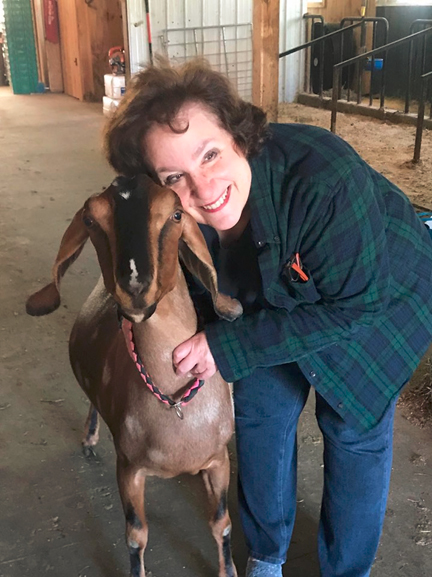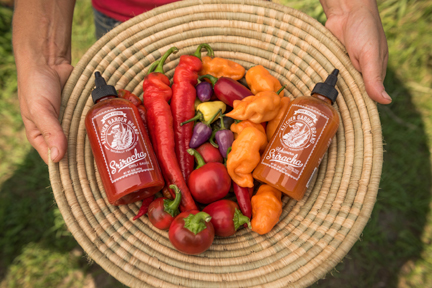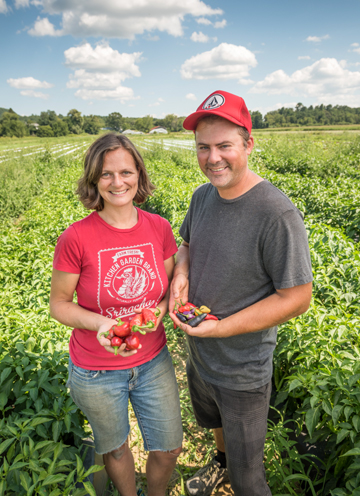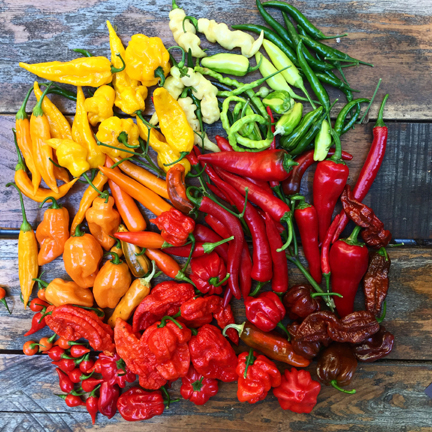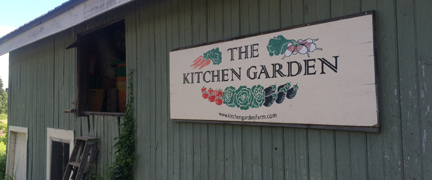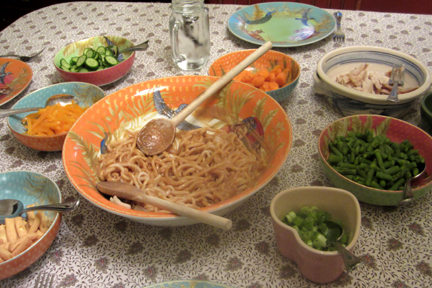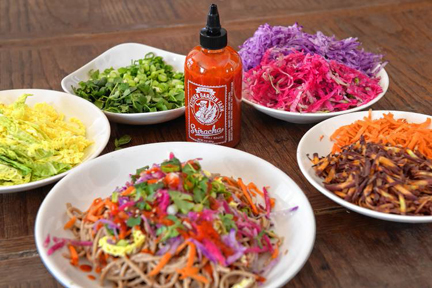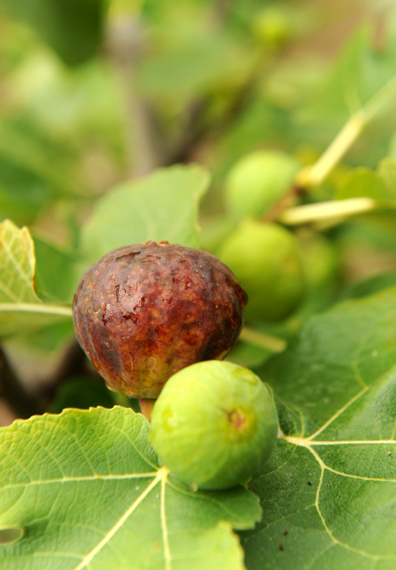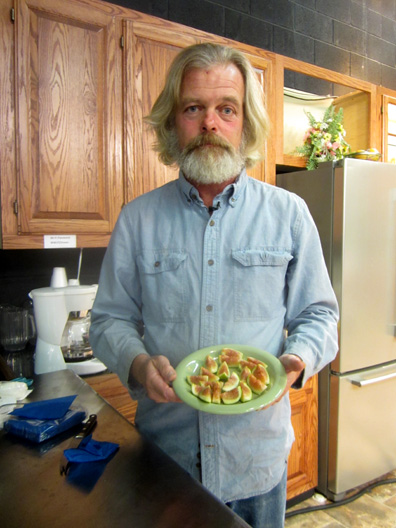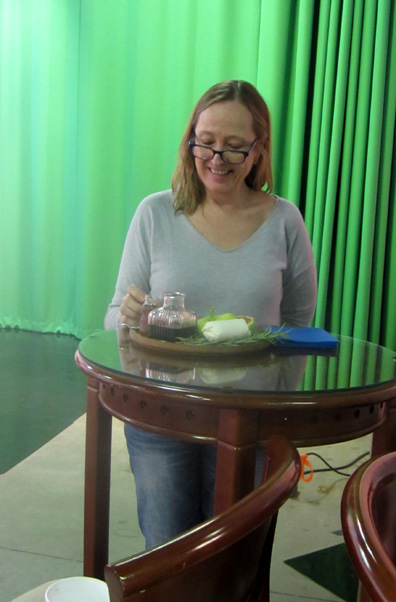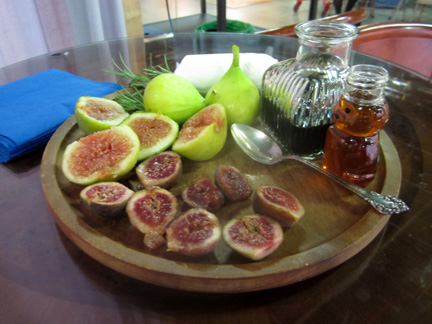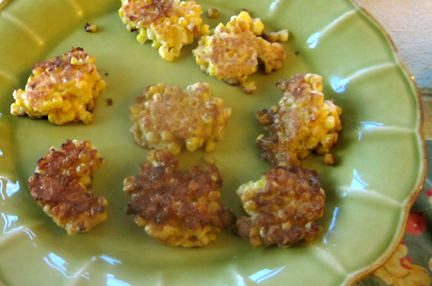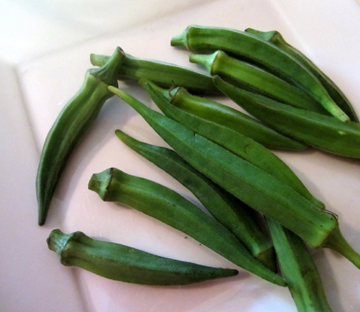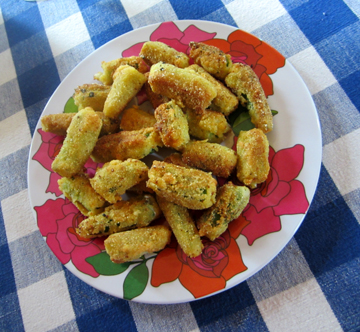
Jim Thomas and Laurie Cuevas love cheese. That’s a good thing. The two are surrounded by it in their day to day life running Thomas Farm in Sunderland, Massachusetts. I wrote this article about them for our local paper and felt I HAD to share it with you. (I love cheese, too!)
Jim started dairy farming there in 2015. He had worked in dairy farms for his entire life. He met Laurie in 2016 and fell in love with her, perhaps in part because of their shared affection for milk and cheese; she had grown up on a dairy farm. They quickly became life and work partners.
“We both have dairy in our bones,” Jim told me when photographer Paul Franz and I stopped by the farm last week.
The pair raise both goats and cows, although there are many more goats (about 90) than cows (10) on the farm. The cows provide raw milk to sell as well as cheese and cheese curds, young bits of cheddar popular for cooking because they hold their shape when heated.
The goats provide goat cheese, a.k.a. chèvre. Jim and Laurie sell the soft goat cheese in a number of flavors, including plain, dill, fresh chive, garlic dill, and cranberry.
When they have extra goat milk, they make hard cheese with it—goat cheddar and gouda—although lately there hasn’t been a lot of extra goat milk. The chèvre is very popular, they noted.
Their cheeses are available at their own farm stand as well as at a variety of local markets. They are also featured on the menus of a number of restaurants.
“We have a really good relationship with our restaurants and stores,” said Laurie. “We deliver the cheese so they know us. They also come to the farm. They like that. They can see that it’s clean, that the animals are happy.”
The animals were indeed happy. Paul and I met a number of the goats, including a pen full of six-month-old girls who were overjoyed to meet us. One in particular kept moving in toward Paul’s camera for a close up.
Of course, part of their interest stemmed from a hope that we had something to eat with us. They tried to nibble on my shirt, my handbag, and my hair.
“They make us laugh,” Laurie said of the goats. “It’s hard not to love them.”
The dairy business is only part of Thomas Farm. Jim and Laurie also raise chickens for eggs and sell vegetables at their farm stand. “For us, diversity is the key here,” explained Laurie.
“If [produce] doesn’t sell at the stand, the animals get it. We believe in sustainability. We do it the right way if we can.”
“We’re both everything,” stated Jim. “To be a farmer you have to have a lot of skills. We don’t sleep.”
Happily, he added, “We both love what we do, and we love each other.”
That love is paying off. Jim and Laurie showed us a number of prizes their cheese has won, including a recent gold medal from the Big E and a second-place award from a national competition sponsored by the American Dairy Goat Association.
They would like to be able to concentrate on the dairy business alone. “Our dream is that we would possibly just make cheese and survive that way,” Laurie confessed.
For the moment, they are happy with their farm as it is rather than as it might be, however. Their passion for their work and for each other has spilled over into the community and created a lot of good will, they told me.
Laurie cited an example of this good will, explaining that in March and April they welcomed 112 baby goats into the world. “We were drowning in the spring,” she sighed. “One night I put out a call on Facebook to ask for old towels.
“We had all sorts of people come and respond. They brought towels. And they brought food. They brought cookies!”
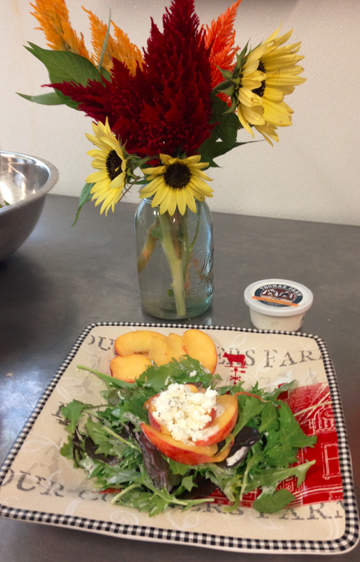
Thomas Farm Goat Cheese Salad
Whenever Laurie Laurie and Jim Thomas are invited to a family gathering, Laurie is asked to bring this simple, tangy salad. She served it to Paul and me with fresh peaches, but as the recipe suggests she uses whatever is in season. I’m thinking of trying it with fresh, crisp apples.
Ingredients:
for the creamy poppyseed dressing:
3/4 cup mayonnaise
1/4 cup milk
1/4 cup sugar
1/4 cup white-wine vinegar
2 tablespoons poppyseeds
1/2 teaspoon dry mustard
1 pinch salt
for assembly:
fresh salad greens
creamy poppyseed dressing (see above)
the fruit of your choice—strawberries, blueberries, peaches, mandarin oranges, or a combination
4 ounces Thomas Farm plain goat cheese
slivered almonds (optional)
Instructions:
Combine the dressing ingredients thoroughly. Arrange the fruit on top of the salad, and toss with the dressing. Sprinkle cheese over all, along with the almonds (if desired). Serves a crowd. Leftover dressing should be stored in the refrigerator.
